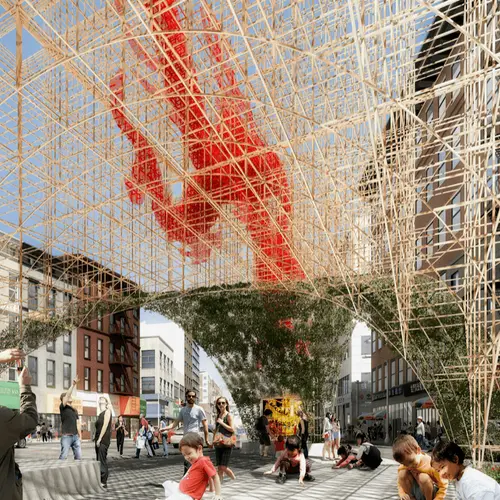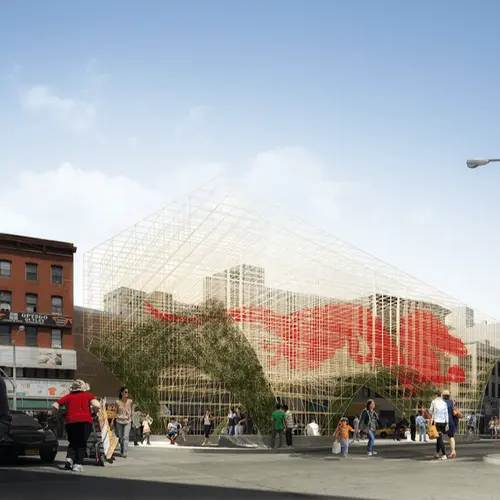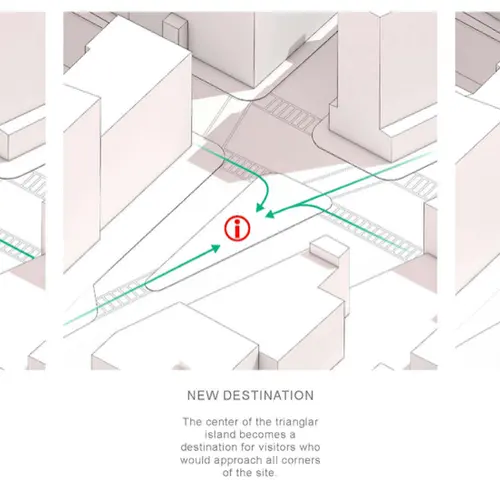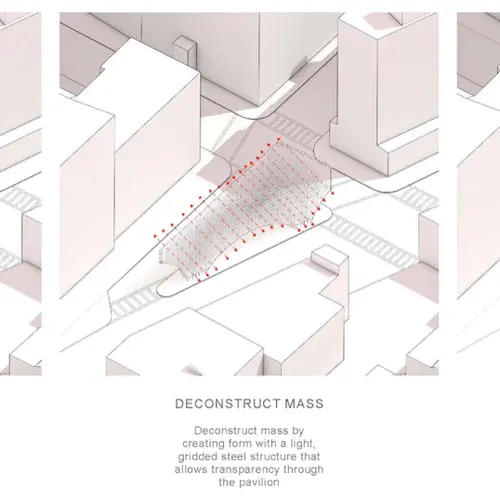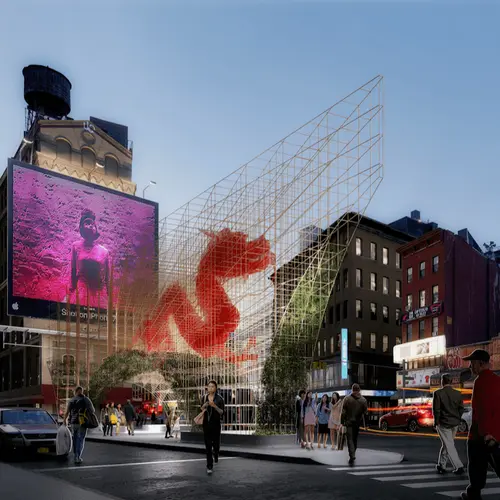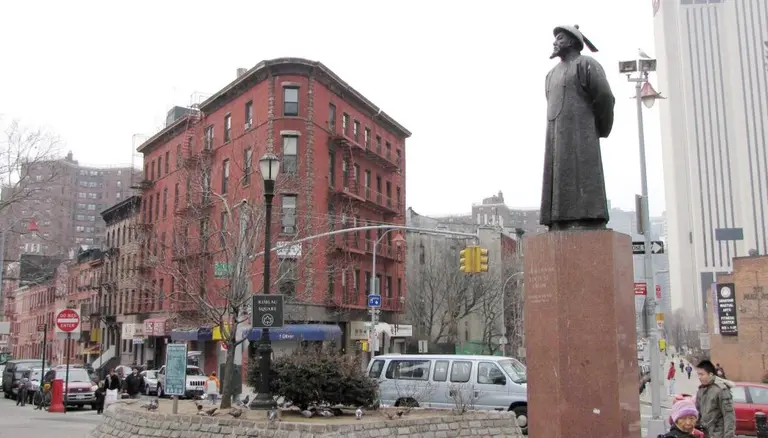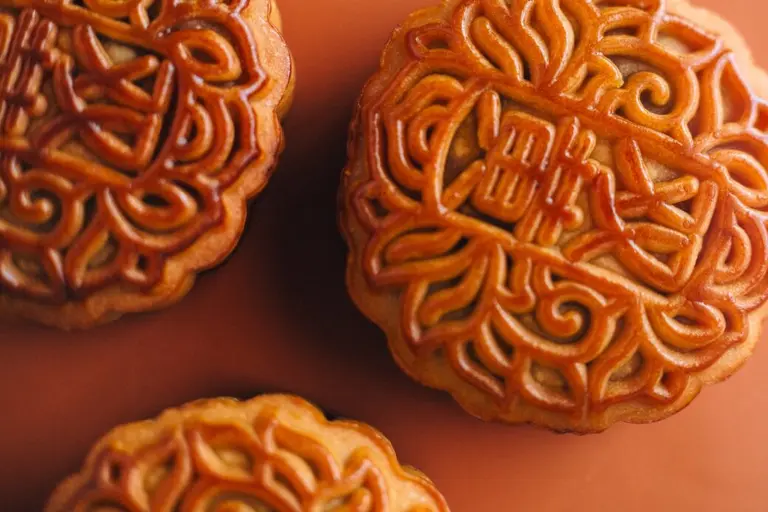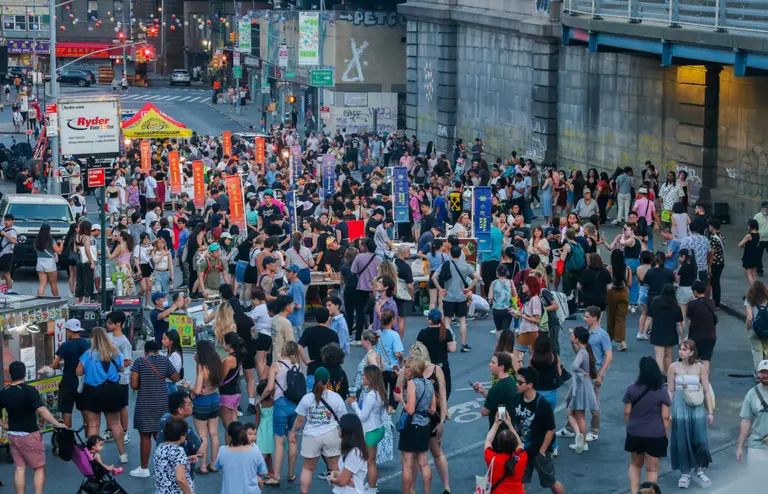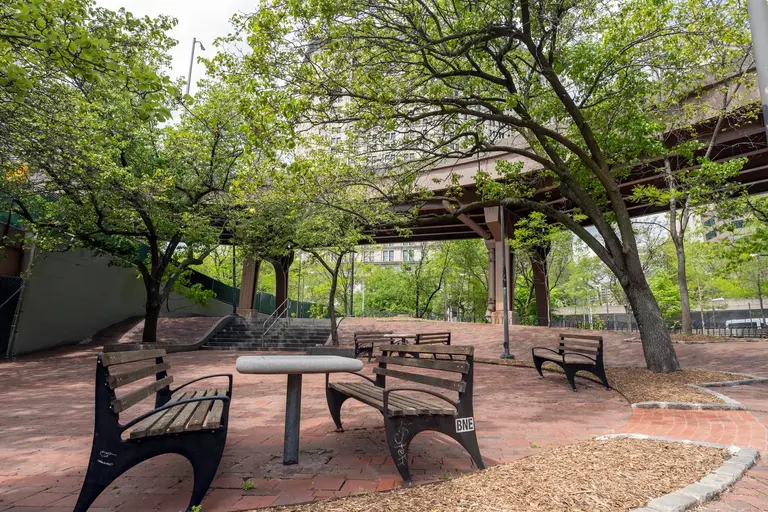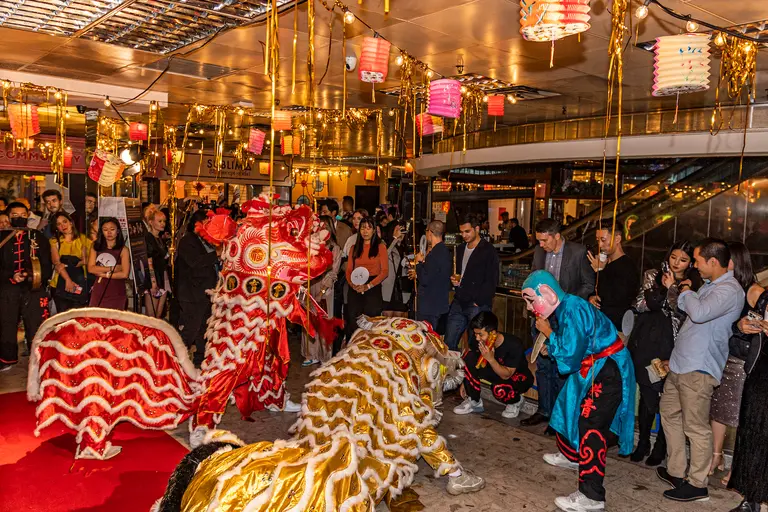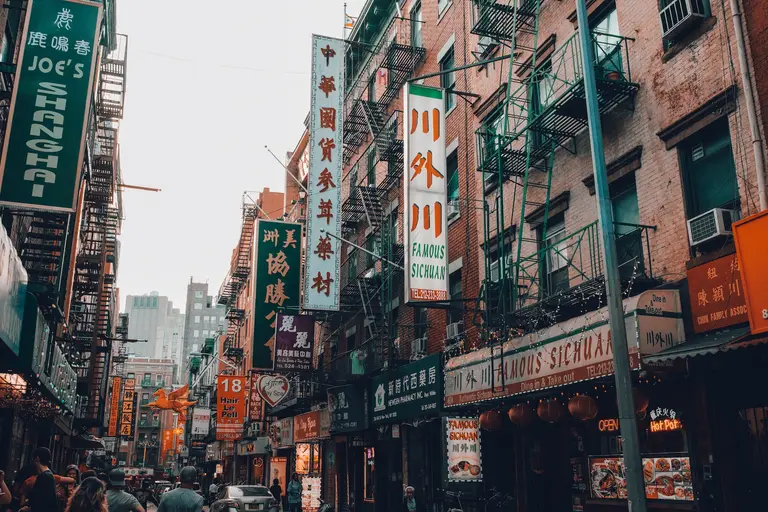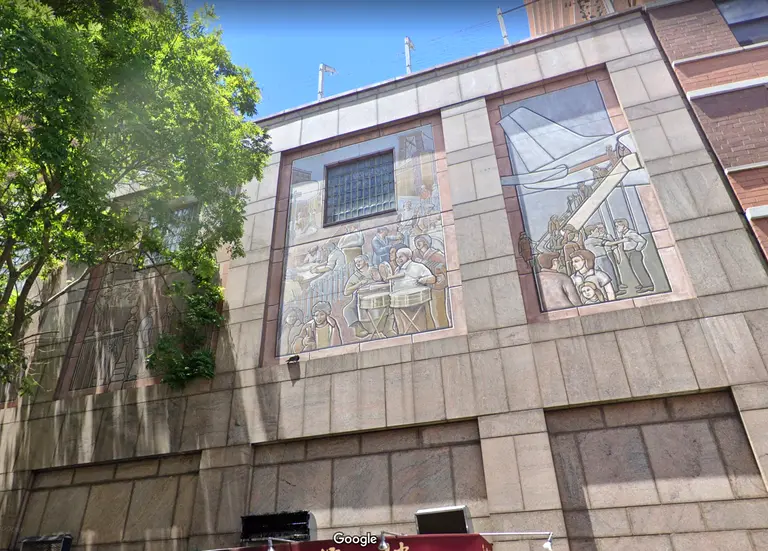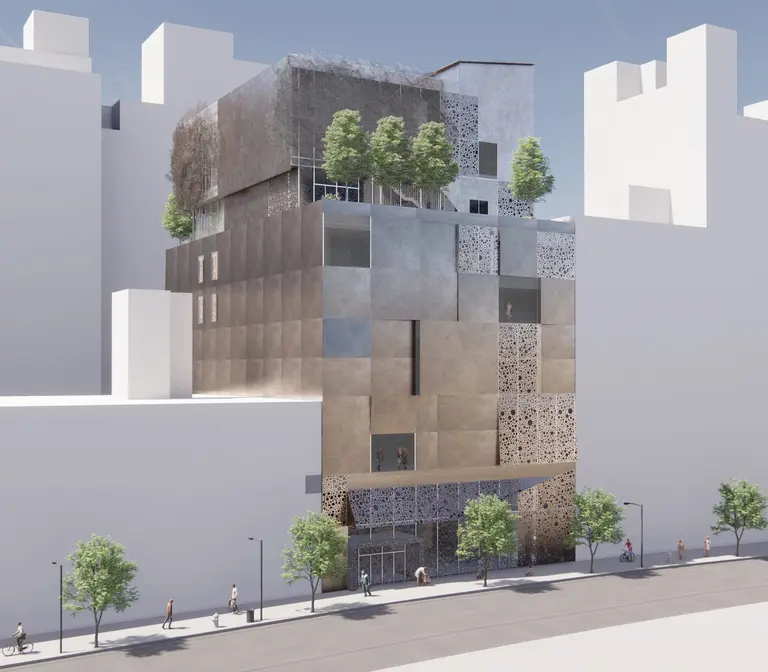ODA’s proposed Chinatown ‘Dragon Gate’ pavilion interweaves tradition and modernity
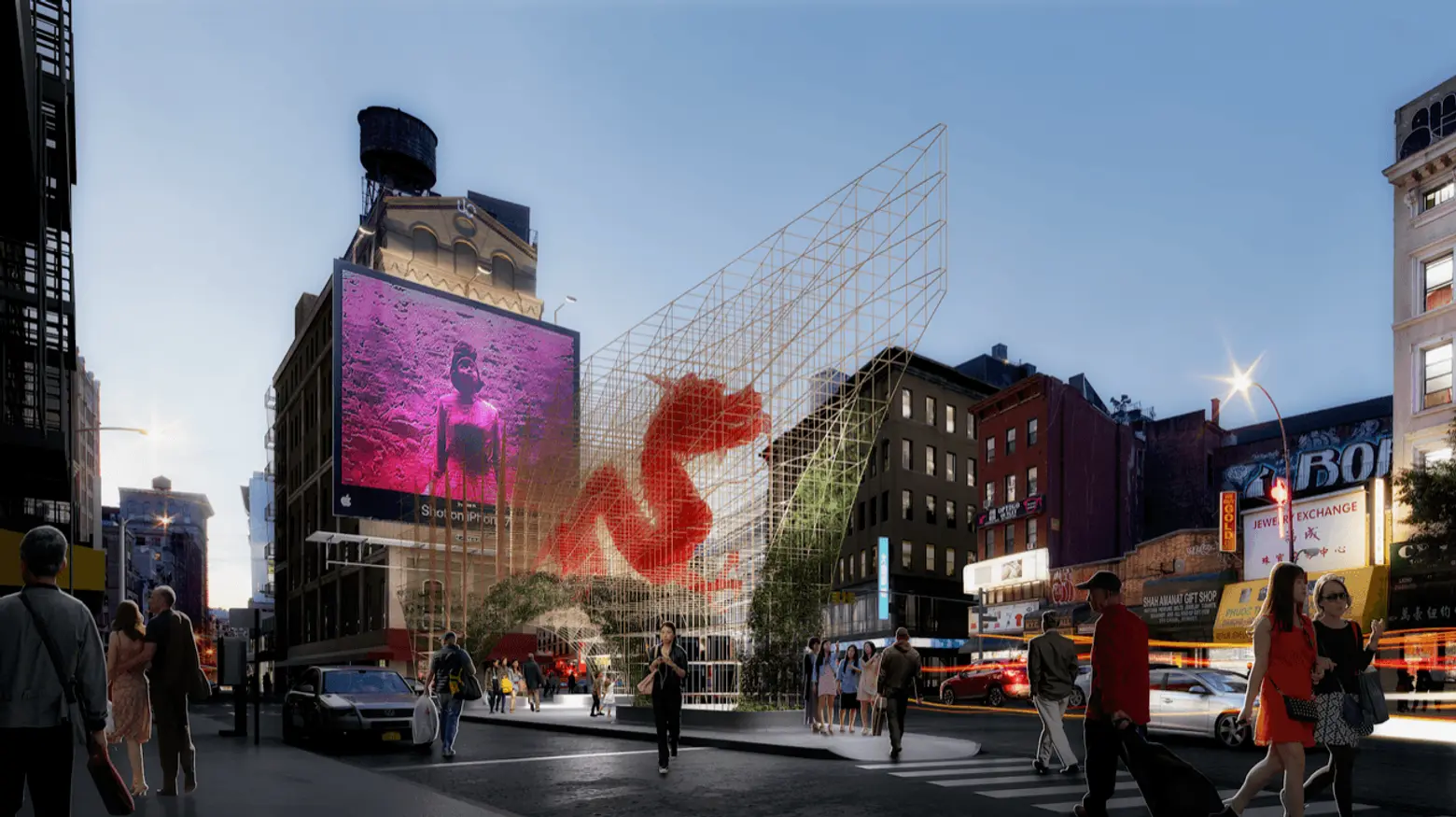
As many other New York City ethnic neighborhoods have diminished or disappeared over the years, Chinatown continues to grow and prosper. Roughly bound by borders at Hester and Worth Streets to the north and south, and Essex and Broadway to the east and west, Chinatown is home to largest ethnic Chinese population outside of Asia. With this in mind, architecture firm ODA New York, known for prioritizing people over architecture, has proposed a unique and beautiful new gateway to the neighborhood at the Canal Street Triangle. ODA’s typical designs can be a bit boxy, constructed with heavier materials, but there is always a lightness to them, whether through the infusion of glass, archways, or greenery. Combining new technology with traditional Chinese symbolism, “Dragon Gate” will delicately weave the duality of Chinatown’s old and new into a strong structure, both in symbolism and material.
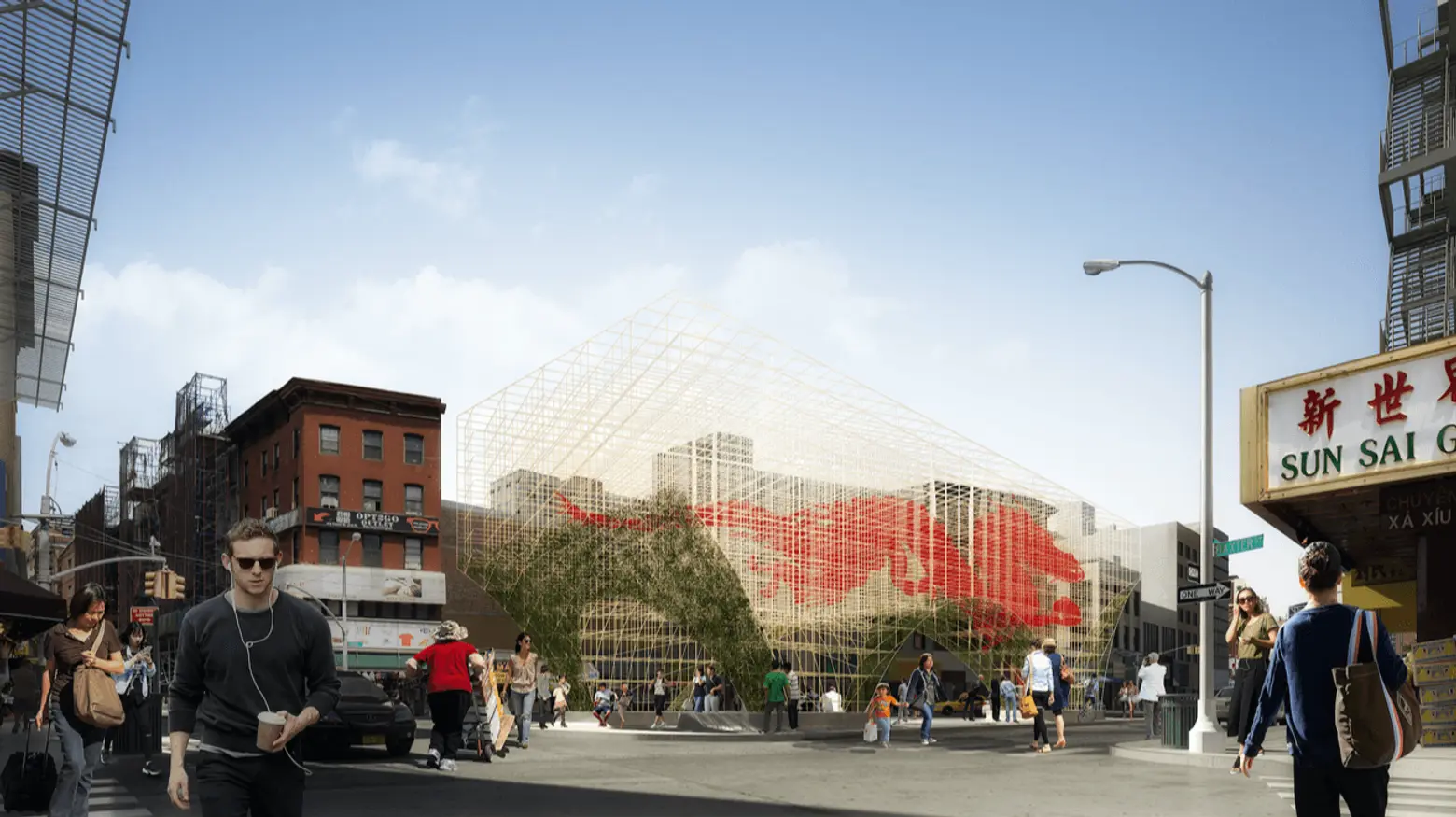
ODA’s proposed Dragon Gate would sit on the triangular traffic island at the intersection of Canal, Baxter, and Walker Streets and rise 33 feet. The three-dimensional structure, made from crisscrossed, interwoven steel painted light bronze to look like bamboo, will eventually be covered in climbing plants, infusing the area with much needed greenery. With several entrance points through sweeping archways, Dragon Gate would accommodate more people than a traditional two-way gate. There will also be a set of digital displays scattered around to communicate community information.
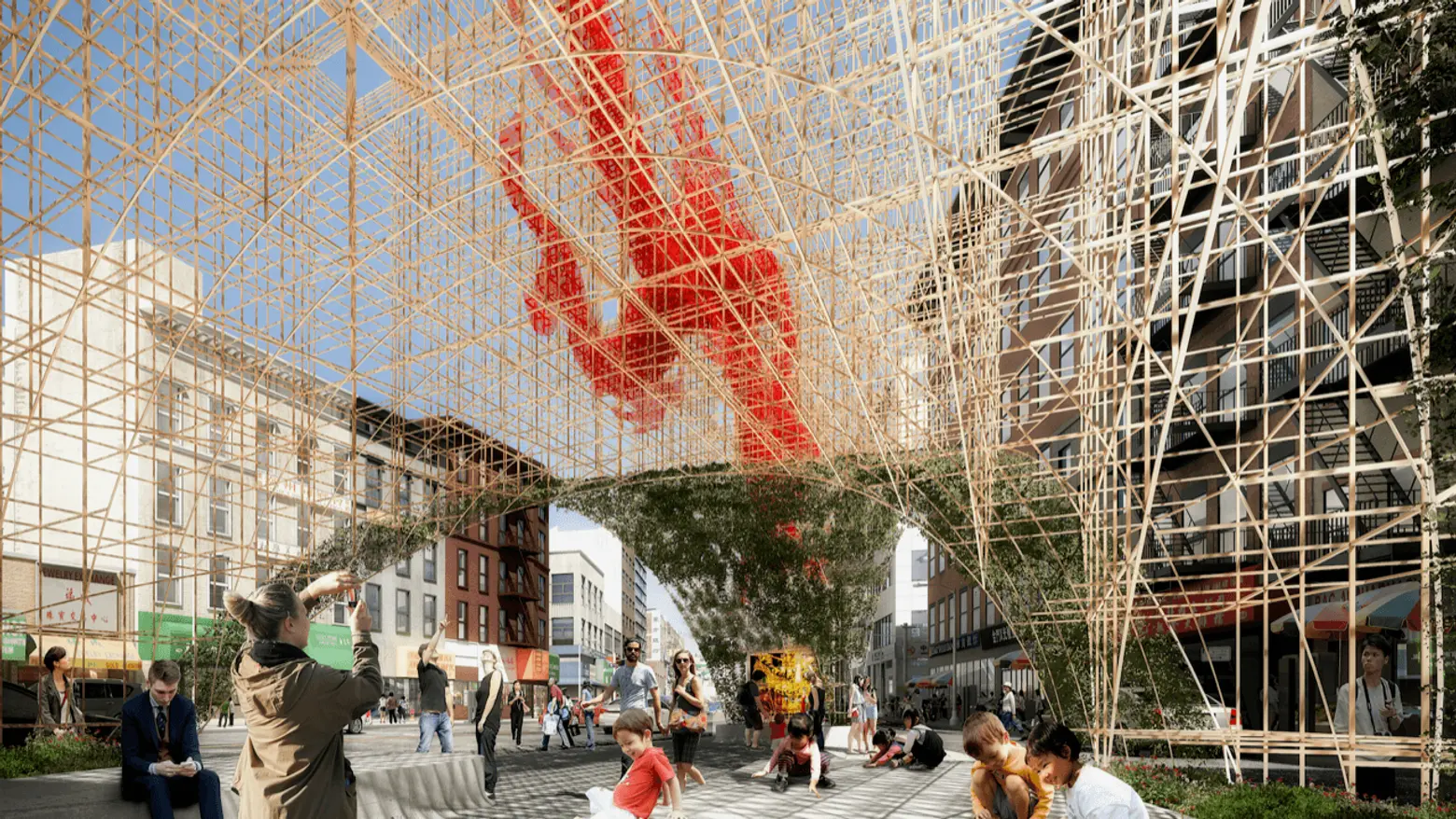
The interwoven structure not only evokes bamboo as a traditional Chinese product but also a common scaffolding construction material used for high-rises in Chinese cities. Bamboo also has massive cultural significance as the primary food for pandas, China’s national animals, and as a sign of longevity and vitality, virtue and luck.
In China, the dragon symbolizes strength and good fortune. The red dragon, painted on various parts of the steel lattice, will look as if suspended on the structure and create a pixelated 3D image which alters depending on where the viewer stands.
In the end, Dragon Gate will delicately blend traditional cultural heritage with modern materials and construction in to create an interactive, dynamic experience as a community nexus. If completed, the Dragon Gate will be an important symbolic entrance gateway to a historic community as well as a modern, end point destination.
RELATED:
- Get to Know Chinatown Through These Iconic Cultural, Gastronomic and Architectural Spots
- New renderings for ODA’s archway-filled hotel in Crown Heights
- New Renderings Show Rooftop and Courtyards at ODA’s Massive Rheingold Brewery Project
All renderings courtesy of ODA Architects
